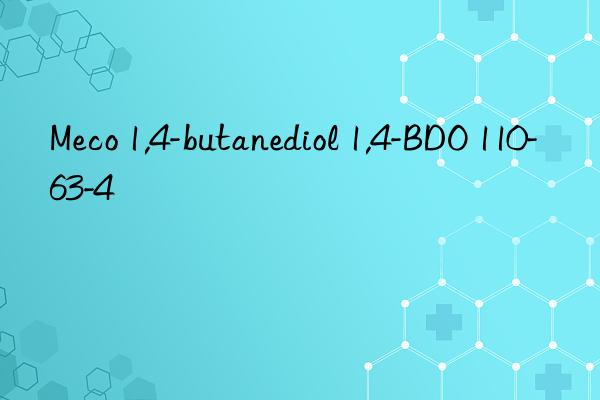
Basic parameters
|
CAS No |
110-63-4;UN 2716 |
|
Molecular formula |
C4H10O2 |
|
Molecular weight |
99.12 |
|
Nature |
Typical value |
|
Purity |
≥99.5% |
|
Status |
Colorless oily liquid |
|
flammable melting point |
20.1℃ |
|
Boiling point |
235℃ |
|
Flash Point (open cup) |
121℃ |
|
Viscosity@25℃ |
71.5mPa·s |
Purpose
1,4-Butanediol is widely used, in addition to being used in the production of Polybutylene terephthalate (PBT), tetrahydrofuran (THF), γ-butyrolactone (GBL), N-methylpyrrolidone (NMP), N-vinylpyrrolidone (NVP), polyurethane resin (PU) In addition to fine chemical products with high added value such as high-performance elastic fiber SPANDEX (spandex), it is widely used as solvents, pharmaceutical cosmetics, plasticizers, curing agents, pesticides, herbicides, foam artificial leather, fibers, engineering Plastic etc.
Chemical Properties
It has strong reactivity and can carry out oxidation, dehydration and replacement. , polymerization, amination, esterification, halogenation and other chemical reactions to generate a series of important chemical products. It is hygroscopic, miscible with water, and soluble in methanol, ethanol, and acetone.
Production process
Made from acetylene and formaldehyde in the presence of a catalyst 1,4- Butynediol is then produced by catalytic hydrogenation. It can also be produced by reacting 1,3-butadiene with acetic acid and oxygen through acetyl oxidation, hydrogenation, hydrolysis, etc.
Packaging, storage and transportation
Packed in aluminum, galvanized iron drums or plastic drums, or in Tank trucks are stored and transported as flammable and toxic substances. Because the melting point is as high as 20°C, a heating pipe should be installed in the tanker.

 微信扫一扫打赏
微信扫一扫打赏

